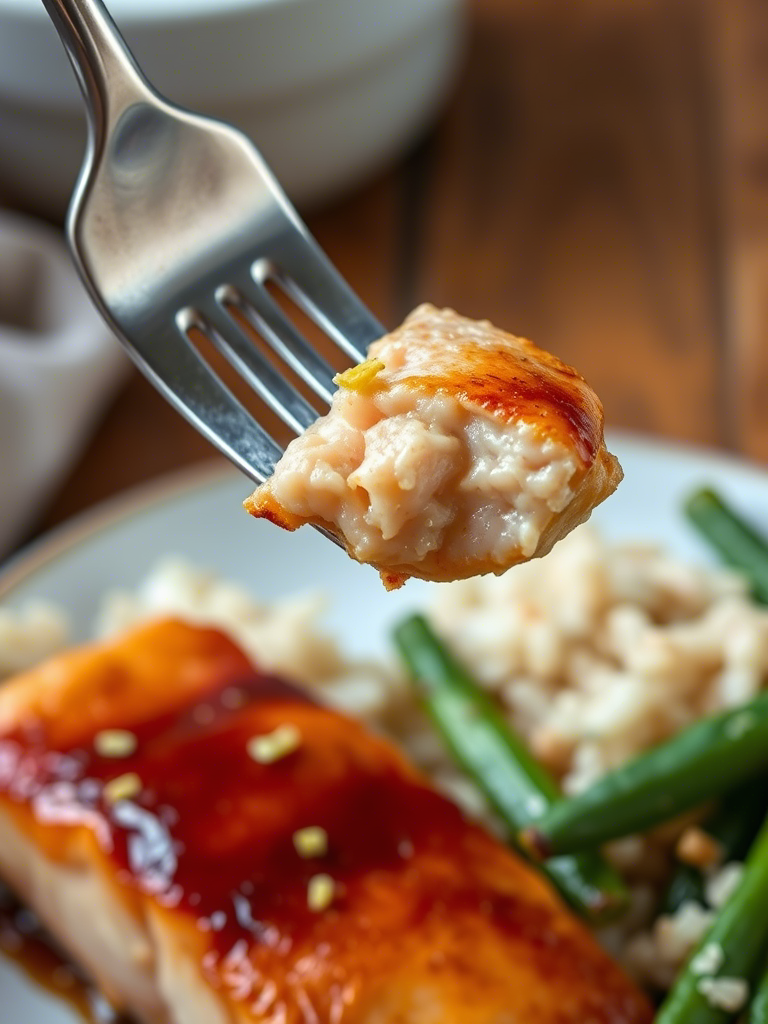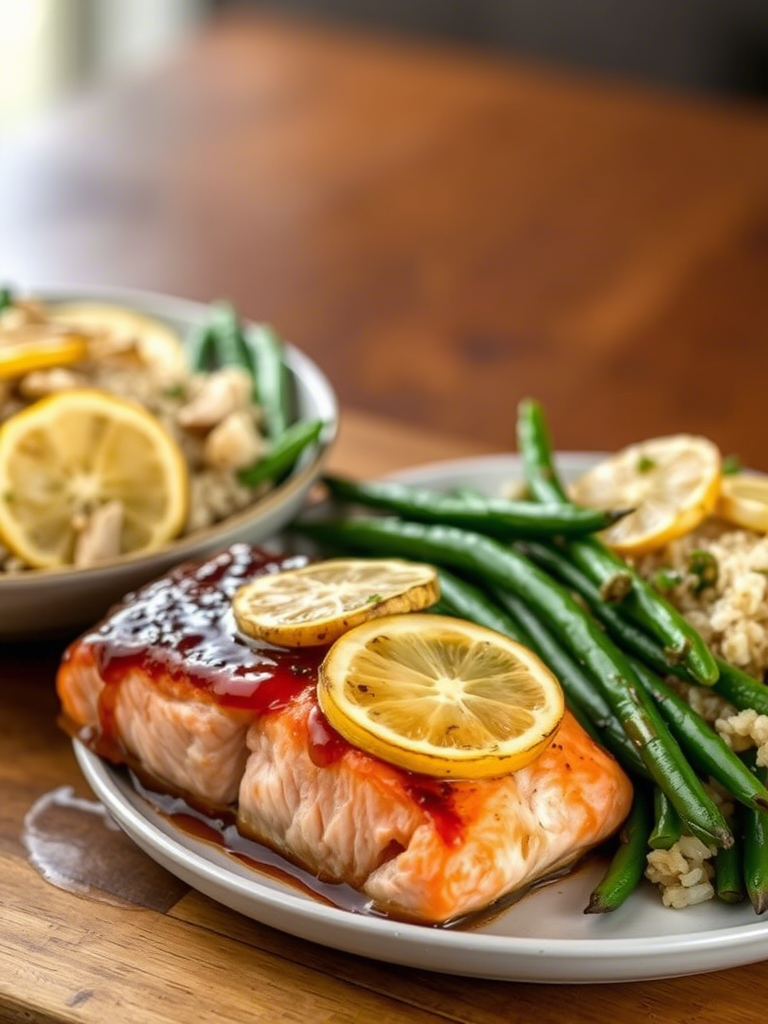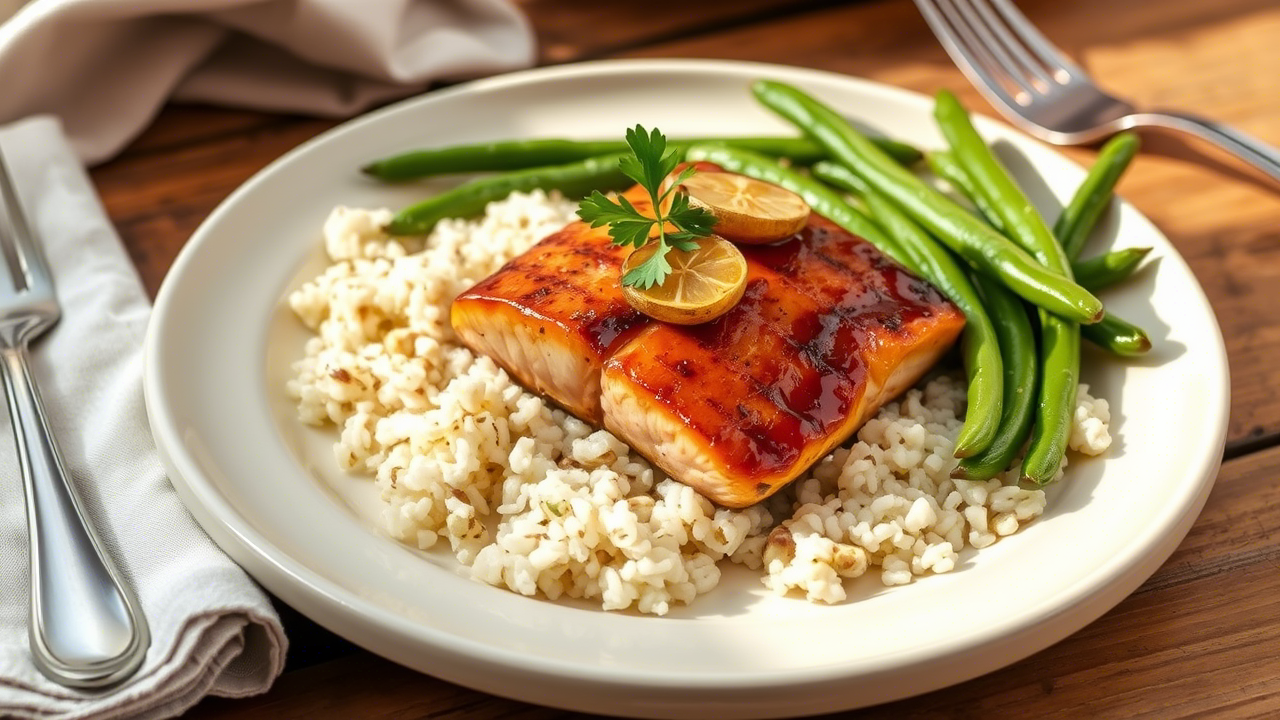You ever hit that moment—6:07 p.m., fridge door wide open, tired, hungry, and zero interest in dirtying five pans? Yeah. That’s the moment this brown sugar soy glazed salmon with lemon and garlic was born to fix. It’s the dinner you whip up when your brain is toast but your taste buds still have standards.
This dish doesn’t just taste like you tried—it tastes like you went culinary-school-level genius. But in reality? It’s one skillet, 20 minutes, and ingredients that probably already live in your pantry. We’re talking that magic sweet-and-salty glaze, a punch of citrus, savory garlic, and salmon that’s tender inside with caramelized crispy edges that almost feel illegal.
And here’s the kicker: chefs, home cooks, and even food scientists can’t stop nodding at the genius of this combo. Why? It’s simple chemistry, cultural synergy, and just flat-out delicious.
Let’s dive into the why, the how, and the tiny decisions that make this salmon more than just another weeknight fallback.
Why Brown Sugar + Soy + Lemon + Garlic Just Works (Like, Really Works)
Let’s unpack this—because this isn’t just a flavor mashup that stumbled into greatness. There’s method in this sweet, sticky madness.
First, brown sugar. It isn’t just about sweetness. It’s about molasses, baby. That deep, almost smoky note does something wild when it hits heat and fat. It caramelizes like a dream, and it clings to the salmon like a hug from a friend who actually texts back.
Soy sauce, on the other hand, brings the umami. The kind of umami that slaps you in the face and then apologizes with a bouquet of flowers. It’s fermented, salty, and complex—it cuts the sugar while amplifying the fish’s natural richness.
Now bring in lemon juice. Not just for acidity—although yes, that’s part of the magic—but for brightness. Lemon doesn’t just cut through fat. It lifts the whole dish. It’s like turning up the contrast in a photo—you didn’t know it needed it, but now it pops.
And garlic—good lord. Sautéed just until fragrant, not burned (seriously, don’t blink), garlic gives the sauce its backbone. It’s the grounding note in this otherwise high-flying flavor circus.
There’s chemistry at play here. Literally. The Maillard reaction, caramelization, acid balance—it all fires off in that hot pan. And the result is a sauce that thickens just enough to cling and shine.

Ingredients That Make Professionals Pay Attention
This dish doesn’t cheat. It’s fast, yeah. But it’s not cutting corners—it’s making every ingredient count. A few things you’ll need:
- Fresh salmon fillets, skin-on or off, but preferably skin-on for crispy texture
- Light brown sugar, packed tight
- Low-sodium soy sauce, to keep things balanced
- Fresh lemon juice, not the bottled impostor
- Garlic, minced fine or grated if you wanna get fancy
- Olive oil or sesame oil, your call depending on the vibe
- Cracked black pepper for a hint of bite
- Scallions or parsley, if you want garnish game strong
And here’s where most folks mess up: they overcomplicate it. This doesn’t need ginger, sriracha, or balsamic. Not in this version. Keep it simple. Let it sing.
How to Nail the Glaze (Without Burning It to Sadness)
This part’s crucial.
Brown sugar burns fast. Like, blink-and-you’ve-charred-your-dinner fast. So timing and temp matter big here. You wanna start with a hot pan, yes—but not nuclear-hot. Medium-high’s your sweet spot.
- Start with oil in the pan. Add garlic, but don’t walk away. Stir it. Smell it. You’ll know when it hits peak aroma—it gets punchy, almost floral.
- Then in goes the soy sauce, brown sugar, lemon juice. Let it bubble just a bit. Not a boil. A gentle simmer. You’ll see it thicken, and that’s your cue—it’s time for the salmon.
- Lay the fish in, skin-side down if you kept the skin. Spoon the sauce over. Keep the heat controlled. You want that golden edge, not blackened sugar.
- Flip only once, and briefly. You don’t wanna overcook salmon—it goes from buttery to dry in less time than it takes to refresh your feed.
Pro tip? Use a fish spatula. And if the salmon sticks, it ain’t ready yet. Let it go another minute—it’ll release when it’s caramelized.
Real-World Kitchen Tips That Actually Matter
If you’re a line cook, sous chef, or even just someone who reads ingredient labels for fun, these tips hit different.
- Dry the salmon with paper towels. Moisture is the enemy of sear. That crispy edge you crave? It starts with a dry surface.
- Room temp fish cooks more evenly. Pull it out of the fridge 15 minutes before. Cold salmon + hot pan = weird cook.
- Don’t crowd the pan. Give each fillet space to breathe. If you’re doing more than two, do it in batches. Overcrowding = steaming, not searing.
- Use a cast iron or stainless skillet, not nonstick. Nonstick pans hate caramelized sauces. They don’t get hot enough and you won’t get that crisp.
- Deglaze after cooking with a splash of water or stock. You’ll loosen up the stuck bits and get bonus sauce.
These aren’t just chef-y tricks. These are the difference between “good enough” and “where has this salmon been all my life.”
Nutrition: Yes, It’s Pretty Darn Balanced
You wouldn’t think a dish with brown sugar would land in the healthy-ish category, but here’s the thing—it actually kinda does.
Salmon is packed with omega-3s, high-quality protein, and B vitamins. One fillet clocks in around 250–300 calories depending on size.
The glaze? We’re not deep-frying anything here. You’re looking at a tablespoon or so of brown sugar per serving. Totally manageable, even in calorie-conscious kitchens.
A 2020 study published in Nutrients emphasized the benefit of seafood-based meals as part of weeknight rotation, especially when paired with antioxidant-rich components like garlic and citrus. This salmon hits those boxes hard.
Serve it with steamed broccoli or roasted carrots and maybe some brown rice? That’s a dinner you can feel smug about.
Pairing: What You Serve It With Matters
This salmon’s got bold flavors. So don’t throw it next to something equally chaotic. Balance it.
- Jasmine rice or coconut rice – Mild, fluffy, absorbs all that sticky glaze like a sponge.
- Roasted bok choy or sautéed green beans – Earthy, slightly bitter greens that round out the sweetness.
- Mashed sweet potatoes – If you want cozy-on-a-plate.
Drink-wise? Go citrus-forward. A chilled Sauvignon Blanc or a citrusy wheat beer balances the glaze beautifully.

Common Questions (That Chefs Actually Ask)
Q: Can you meal prep this?
Kinda. Cooked salmon reheats okay but isn’t perfect. What you can do is make the glaze ahead. It stores well in the fridge for 4–5 days. Reheat gently and finish fish fresh.
Q: Can I bake instead of pan-sear?
Yes, but. You’ll lose the caramelization that pan-searing gives. If baking, crank it to 425°F, glaze the salmon, and roast 12–14 mins. Broil at the end to crisp it up.
Q: Skin on or off?
Skin-on gives you crispy texture. Skin-off lets the glaze hit every surface. Dealer’s choice. Both work.
Q: What’s the best salmon to use?
Atlantic farm-raised is more forgiving. Wild-caught (like sockeye) is leaner and cooks faster. Just don’t overdo it—wild dries out quicker.
Emerging Trends: Sweet-Umami Profiles on the Rise
Look across restaurant menus, and you’ll notice: this flavor combo’s having a moment. According to a 2023 Flavor & The Menu report, “sweet-savory Asian-influenced glazes” saw a 14% rise in casual dining applications.
Chefs are swapping honey for maple, adding miso, playing with tamarind, but the backbone remains: sugar, acid, soy, garlic.
It’s not just trendy—it’s versatile. That glaze? Try it on shrimp, tofu, or grilled chicken. Heck, toss it on roasted Brussels sprouts if you’re feeling wild.
Final Thoughts: This Ain’t Just Dinner—It’s a Lifesaver
Here’s the truth. Some nights, you want gourmet. Some nights, you want fast. And sometimes—rare, precious times—you get both.
This Brown Sugar Soy Glazed Salmon with Lemon & Garlic is that rare unicorn of flavor-packed, easy, weeknight brilliance. It’s the dish that earns you compliments you lowkey didn’t expect. And it’s foolproof, forgiving, and stupidly delicious.
Save it. Print it. Frame it if you must. Because once you make it once, you’ll never not want it in your weekly rotation again.
And let’s be real—there’s something deeply satisfying about finishing dinner, licking that sticky glaze off your fork, and knowing you pulled off something restaurant-level… in your pajamas.
That’s what I call a weeknight win.
FAQs
What kind of salmon works best for this recipe?
Skin-on Atlantic or wild-caught sockeye both work, but Atlantic is more forgiving for beginners.
Can I use honey instead of brown sugar?
Yes, but brown sugar gives a deeper caramel flavor that sticks better to the salmon.
Is it okay to bake the salmon instead of pan-searing?
Yes, bake at 425°F for 12–14 minutes and broil briefly for caramelization.
Can I prep the glaze ahead of time?
Absolutely—it keeps well in the fridge for up to 5 days.
What sides go best with this salmon?
Coconut rice, roasted greens, or mashed sweet potatoes complement the flavors perfectly.
How long does it take to cook the salmon?
About 8–10 minutes total, depending on thickness and heat level.
Can I make this dish gluten-free?
Yes, just use gluten-free soy sauce or tamari instead.
Can I use frozen salmon?
Yes, but thaw it completely and pat dry before cooking for best results.
Why is my glaze burning in the pan?
Your heat is too high—sugar burns fast, so keep it at medium-high and stir constantly.
Do I need to marinate the salmon first?
Nope—the glaze cooks right onto the salmon and delivers full flavor without marinating.

Mariana is a passionate home cook who creates delicious, easy-to-follow recipes for busy people. From energizing breakfasts to satisfying dinners and indulgent desserts, her dishes are designed to fuel both your body and hustle.
When she’s not in the kitchen, she’s exploring new flavors and dreaming up her next recipe to share with the Foodie Hustle community.

